
|
|

|
by Carl Bilter
October 20, 2011
To start, let's dispel a few myths and provide some clarifications. While the term headlight is frequently used to describe automotive lighting systems, headlamp is technically the correct term. This is probably only meaningful to purists, as the Chrysler factory service manuals referred to the devices as headlights. Regardless, many folks who think they might have original equipment headlamps on their letter cars likely do not. Back in the day, most of our cars were used and used hard. Pre-interstate roads could be rough and in day-to-day use, headlamps would often burn out within a few years, especially the low beams. Surprisingly, some survived the test of time and are still in use to this day (some examples provided later in the article).
If you have old headlamps in your car that say "T-3" in the center of the lens and "Guide" at the bottom, they are not original. Guide lamps were only used on GM vehicles. If your lamps are from Westinghouse or Sylvania, they are not original. Even if it turns out that your letter car has some original headlamps, their ability to effectively illuminate the road (even when new) is generally inadequate at highway speeds. Modern halogen headlamps would be far more effective. However, for historical purposes and for the purists, I have assembled some information about and photos of original style headlamps.
Headlamps on American cars from 1955-1965 were standardized by law. The standard 7-inch round sealed beam headlamp, containing both the high and low beam, was introduced in 1940 and was soon required for all vehicles sold in the USA. Halogen headlamps were introduced in 1962 in Europe but not legalized for use in the US until 1978. The 1955 C300 and 1956 300B came with the standard 7-inch round two lamp system, and it was also used in a few states on the 1957 300C where the four lamp system had not yet been legalized. Chrysler introduced the 5¾ inch sealed beam four lamp system in all other states on the 1957 300C. The 1958 through 1965 letter cars, as well as the 1970 300 Hurst, came with the standard four lamp system. The 1965 300L came with glass covered headlamps, the only year so equipped. In 1968, federal regulations were initiated that prohibited using glass covers or any other cover over headlamps when they were switched on.
Headlamps have numerical codes in the glass lens to help identify their application. Prior to 1974, the headlamps used in the USA had wide lens flutes and the following codes at the top center of the lens: "1" for the 5¾ inch high beam lamp, "2" for the 5¾ inch low/high beam lamp, and "2" for the 7 inch low/high beam lamp. After 1974, the round headlamps had narrow lens flutes and the following codes at the top center of the lens: "1C1" for the 5¾ inch high beam lamp, "2C1" for the 5¾ inch low/high beam lamp, and "2D1" for the 7 inch low/high beam lamp. Here are two photos that illustrate the codes.
The scope of this article is to document the suppliers and various headlamp styles that were originally used on the Chrysler 300 letter cars for vehicles sold in the USA. Cars built for export may have been equipped with different style headlamps to meet the specific laws and conventions of the destination country, which is beyond the scope of this article.
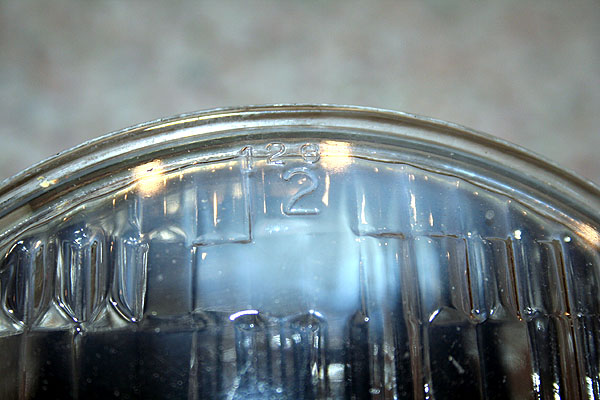
and this photo is a Westinghouse low/high beam lamp from 1984
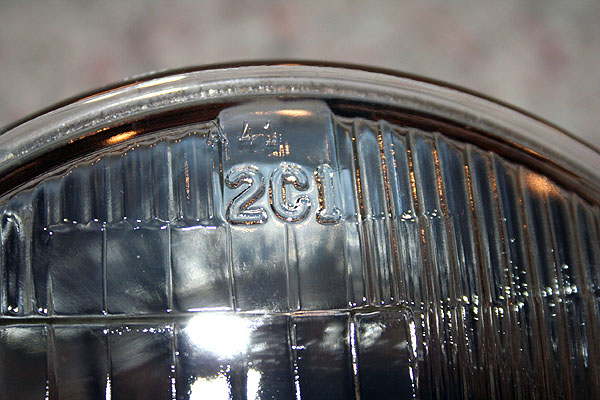
The 1955 Chrysler C300 used the 6V 7 inch two lamp system with "bulls-eye" style headlamps. These were introduced in the 1949 model year and the wattage was upgraded in 1954. They were supplied by Auto-Lite.
Here are photos of the front and back of the "bulls-eye" headlamp.
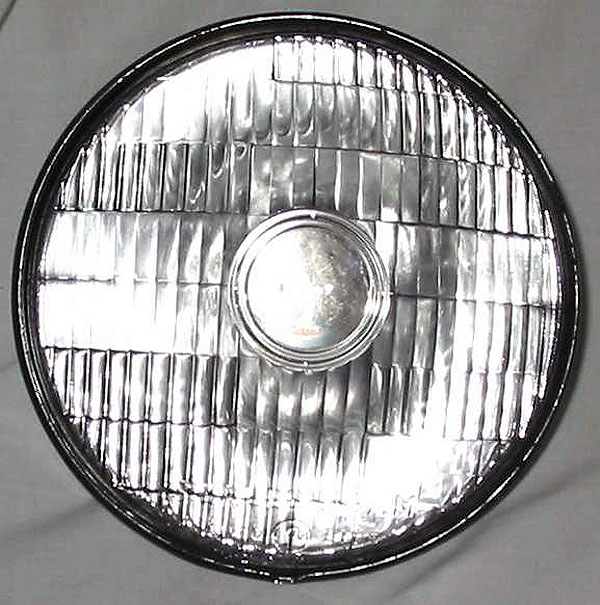
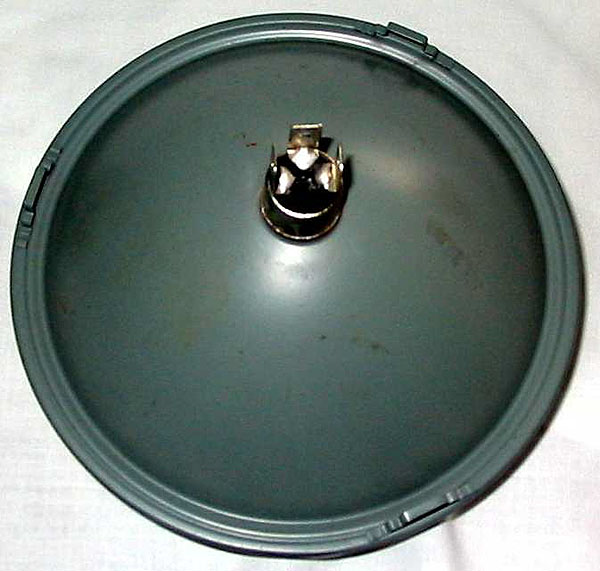
These photos are courtesy of Merle Wolfer.
The 1956 Chrysler 300B debuted the 12V electrical system on letter cars and was equipped with the 7 inch two lamp system. While some club members believe that the 1956 headlamps were the same as the 12V version of the "bulls-eye" style headlamps introduced on the 1953 Crown Imperial, I have not found factory photographs or documentation to support this. While it is true that the 1956 Chrysler factory brochures included illustrations that clearly used the "bulls-eye" style headlamps, all the illustrations in the brochures (Chrysler, Imperial and 300B brochures) were artistic renditions of the cars and no illustrations were actual photographs. Every factory photograph or advertisement using an actual photograph of a 1956 Chrysler that I found used a new style of headlamp, which is illustrated in the 1956 Factory Service Manual and copied here.
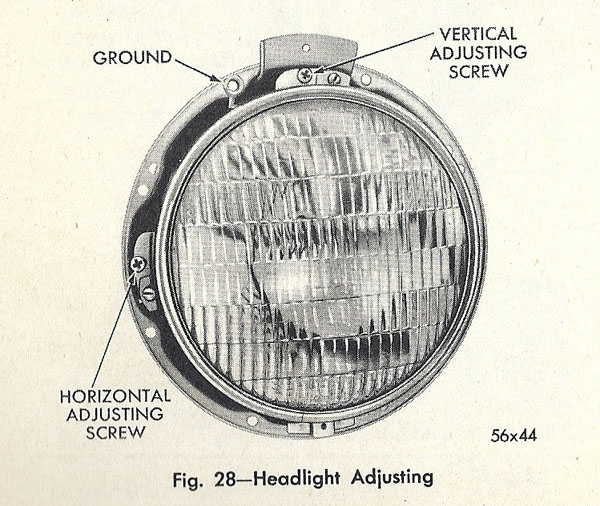
Furthermore, examination of the Mazda and Chrysler part numbers reveals a difference. The "bulls-eye" style 12V headlamp used on the 1953-55 Crown Imperial was Mazda number 4430 and Chrysler part number 1567159. The 1956 service manual indicates that the proper 12V headlamp is Mazda number 5400 and Chrysler part number 1648133.
The 1957 Chrysler introduced the four lamp system in states where it was legalized. Although rare, the 7 inch two lamp system was used in other states until the laws were changed to allow four lamp systems. The two lamp system used in 1957 was identical to 1956. This is validated both in the 1957 factory service manual, where again the Mazda part number is 5400 and the Chrysler part number is 1648133, and also through factory photographs of the two lamp system in 1957. Here is a factory photo showing the two lamp system on an Imperial. This would have been the same on a 300C.
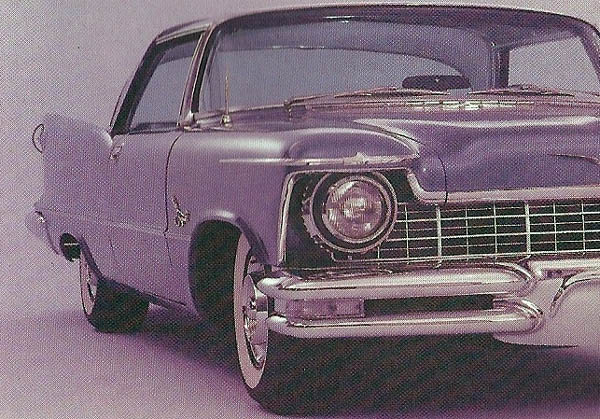
The much more common four lamp system starting in 1957 used different style headlamps than the two lamp system. The "top-tier" supplier of headlamps to Chrysler from this point forward was General Electric. The next "tier" supplier was Tung-Sol. Chryslers and DeSotos were predominately equipped with GE headlamps, but Tung Sol lamps as original equipment were not uncommon. Some vehicles were equipped using both brands of lamps. For example, one could have bought a new 1957 300C that was equipped with a pair of outboard GE low/high beam lamps and an inboard pair of high beam Tung-Sol lamps. It simply depended what was in the parts bin on the assembly line. Note, however, the same brand would be used for each pair of headlamps (i.e. low/high beam or high beam only).
The 1957 through 1960 GE headlamps in the four lamp system are known as "center dot" lamps, due to the circle in the center of the lens with "GE" in script letters.
Here are pictures of the GE "center dot" 5¾ inch headlamp which is an original lamp from a 1959 300E.
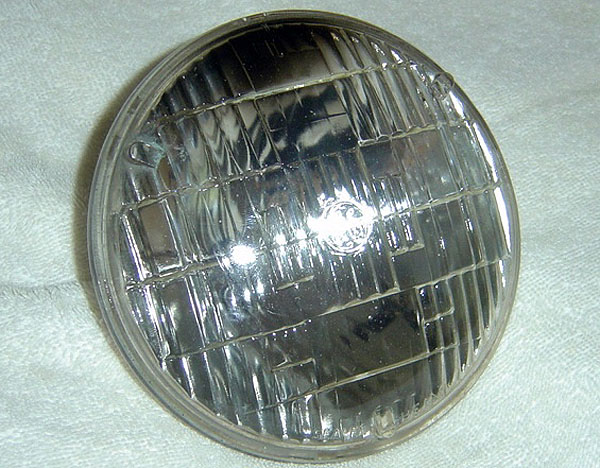
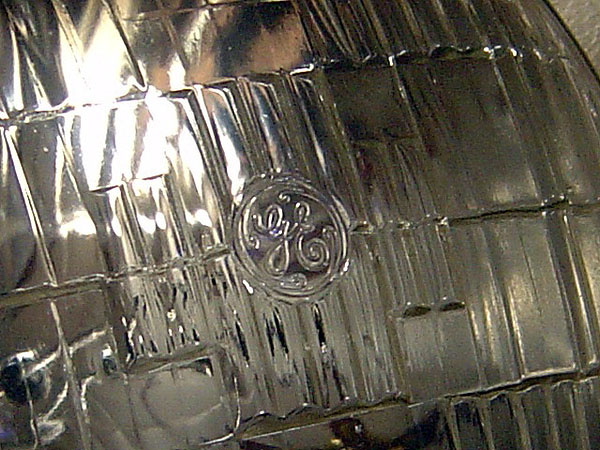
These photos are courtesy of Ron Kurtz.
Tung-Sol also supplied a similar "center dot" style to Chrysler from 1957 through at least early 1961. Here is a photo of a NOS Tung-Sol "center dot" headlamp, along with the original Mopar box in the background. We also have a photo of the stamp on the back side of this headlamp. While it may be difficult to read, the small numeral "1" after 12V probably signifies a 1961 production date. Some headlamps were coded with a single date code for the year, while others had a two digit code for the year.
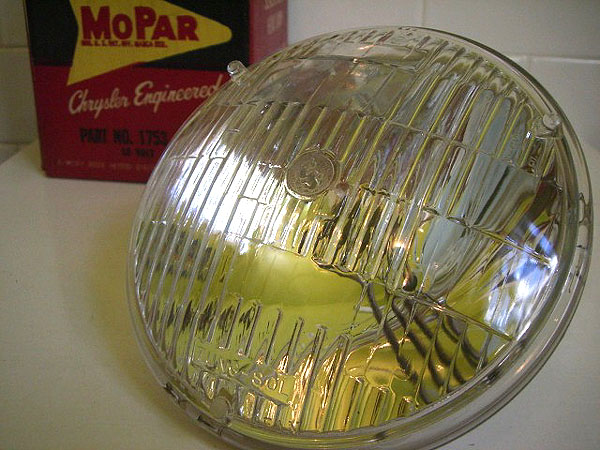
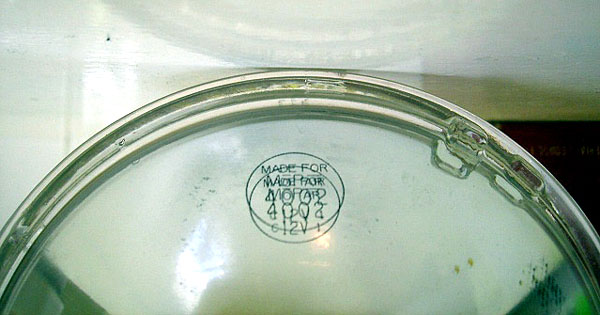
These photos are courtesy of Andy Mikonis.
In 1961 both Tung Sol and General Electric introduced new headlamp styles with their trade names spelled out in raised lettering at the bottom of the lens. Therefore, I imagine that it is possible that one could have purchased a new 1961 300G with either the older "center dot" style headlamps, or the new style headlamps, from either GE or Tung Sol (or both brands) depending on what was in the parts bin on the assembly line. However, these styles introduced in 1961 were then used for the balance of letter car production through 1965, on the 300 Sport series, and also on the 1970 300 Hurst.
Here are photos front and back of the later style Tung Sol lamp. This example is from 1961. Note the "Made for Mopar" and "61" date code. This headlamp was in use in one of my Imperials until 2011, and yes it still works. Both Tung Sol and GE were noted for high build quality "back in the day."
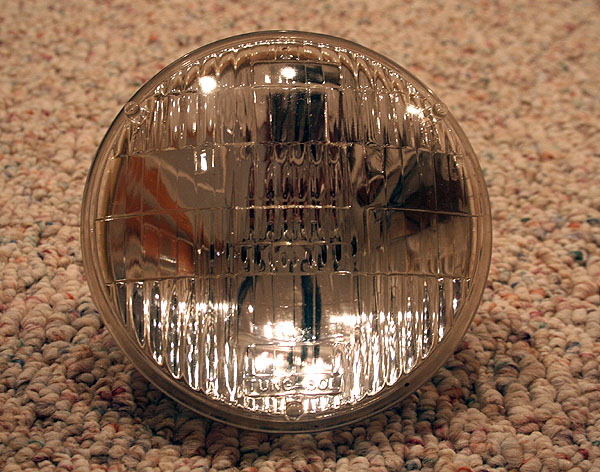
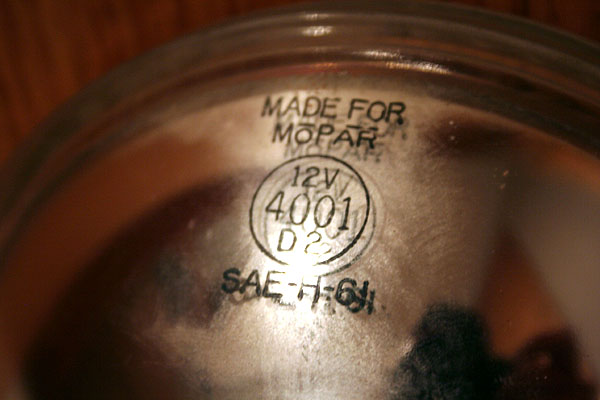
Here are photos front and back of the later style GE lamp. "General" and "Electric" are spelled out at the bottom of the lens with a small circle and "GE" in script in the middle. This example is from 1965. This headlamp has been in use in my 300J since 1965, and it also works fine. More remarkable is that this is one of the outboard low/high beam lamps which obviously gets the most use.
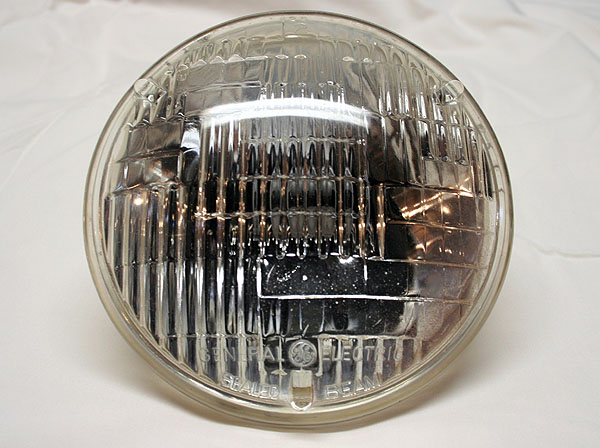
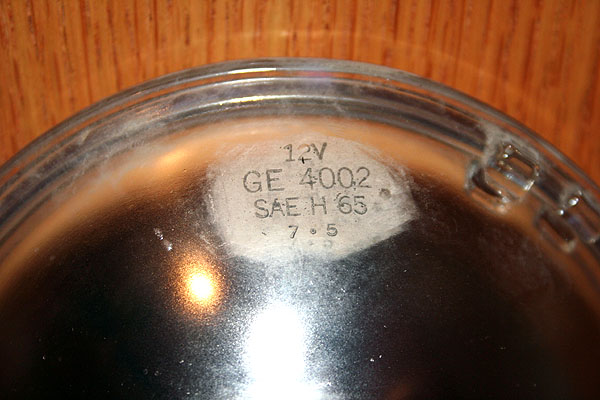
Other members have sent me information about original headlamps in their letter cars as well. Club member John Holst has a 1964 300K that his father bought brand new and it still has three of its original GE headlamps.
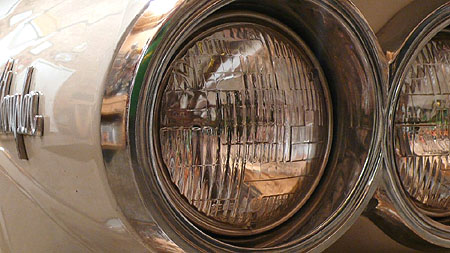
Club member Don Warnaar bought his 1965 300L brand new and it still has its original GE headlamps. Here is a photo of the driver’s side headlamps on Don’s car:
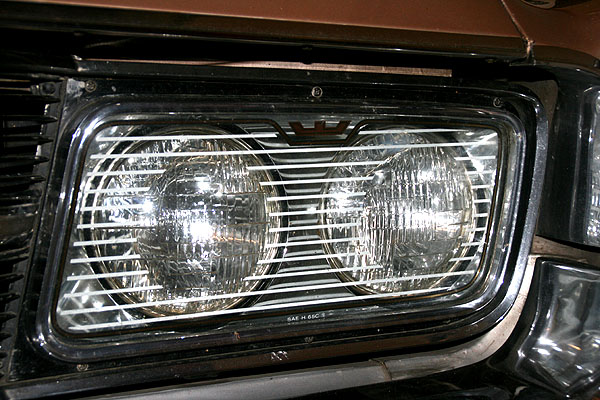
As mentioned earlier, in 1974 the industry changed to a narrow flute lens design as illustrated in this photo of a Westinghouse headlamp from 1984.
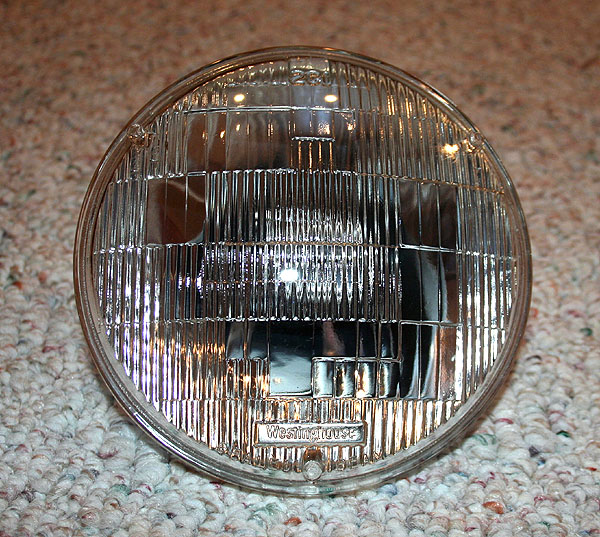
If your letter car has this style of headlamp, it is not original to the car.
I would like to thank Rich Barber, Wayne Graefen, Ron Kurtz, Andy Mikonis, Don Warnaar, and Merle Wolfer for their contributions and research on this article.

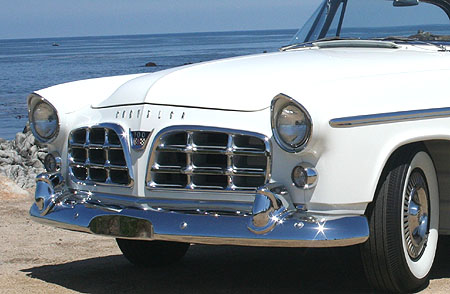

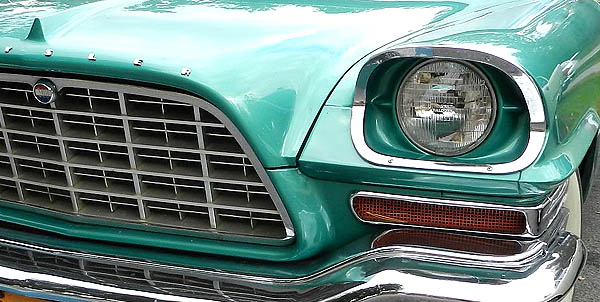

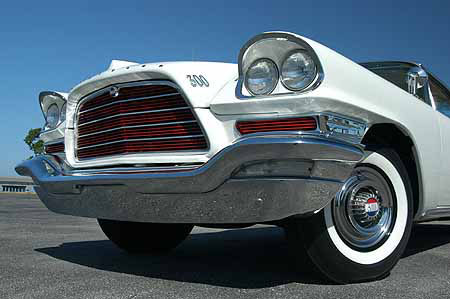
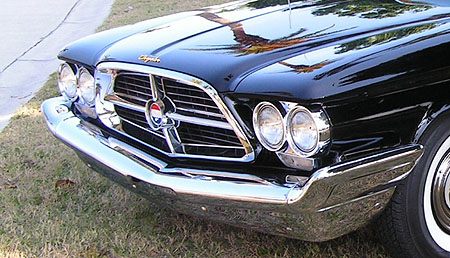


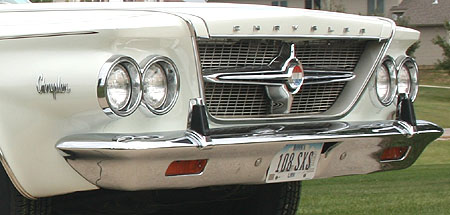
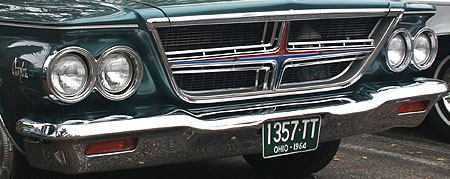
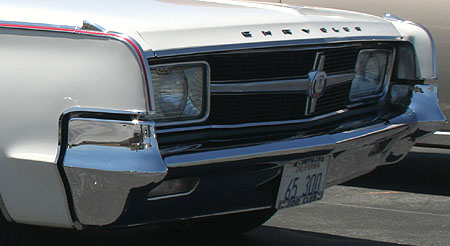
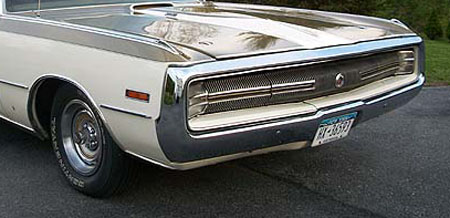
Back to the technical list page